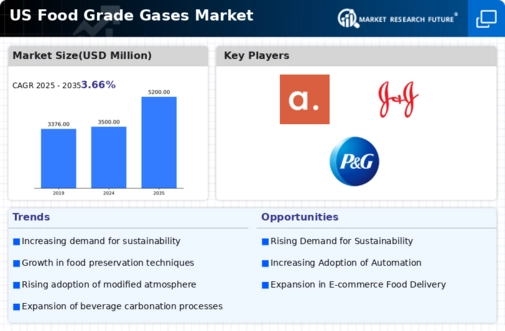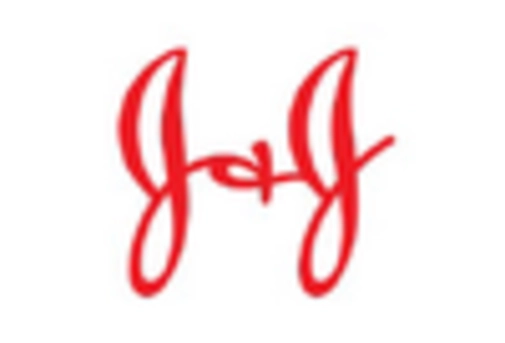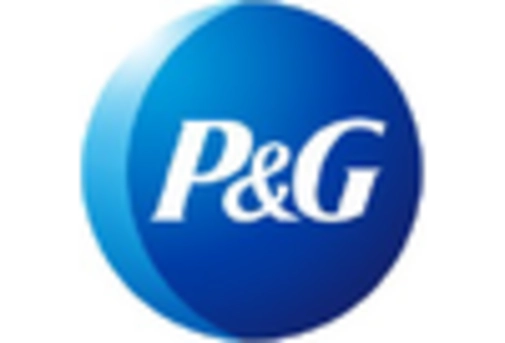The food grade gases market exhibits a dynamic competitive landscape characterized by a blend of innovation, strategic partnerships, and regional expansion. Key players such as Air Products and Chemicals Inc (US), Linde plc (US), and Matheson Tri-Gas Inc (US) are at the forefront, each adopting distinct strategies to enhance their market positioning. Air Products and Chemicals Inc (US) focuses on sustainability initiatives, aiming to reduce carbon emissions in its production processes, which aligns with the growing demand for environmentally friendly solutions. Linde plc (US) emphasizes technological advancements, particularly in digitalization, to optimize its supply chain and improve operational efficiency. Meanwhile, Matheson Tri-Gas Inc (US) is actively pursuing strategic partnerships to expand its distribution network, thereby enhancing its market reach and customer service capabilities.
The business tactics employed by these companies reflect a concerted effort to localize manufacturing and optimize supply chains, which are crucial in a moderately fragmented market. This competitive structure allows for a diverse range of offerings, yet the influence of major players remains pronounced. The collective strategies of these companies not only shape their individual trajectories but also contribute to a more resilient and responsive market environment.
In November 2025, Linde plc (US) announced a significant investment in a new production facility aimed at increasing its capacity for food grade gases. This strategic move is expected to bolster its supply chain capabilities and meet the rising demand from the food and beverage sector. The establishment of this facility underscores Linde's commitment to enhancing its operational footprint and ensuring timely delivery of products to its customers.
In October 2025, Air Products and Chemicals Inc (US) launched a new line of eco-friendly food grade gases designed to cater to the growing consumer preference for sustainable products. This initiative not only positions the company as a leader in sustainability but also aligns with broader market trends favoring environmentally responsible practices. The introduction of these gases is likely to attract a new customer base while reinforcing existing relationships with environmentally conscious clients.
In September 2025, Matheson Tri-Gas Inc (US) entered into a strategic alliance with a major food processing company to enhance its distribution capabilities. This partnership is anticipated to streamline logistics and improve service delivery, thereby increasing customer satisfaction. Such collaborations are indicative of a trend where companies seek to leverage synergies to enhance their competitive edge in a rapidly evolving market.
As of December 2025, the competitive trends in the food grade gases market are increasingly defined by digitalization, sustainability, and the integration of advanced technologies such as AI. Strategic alliances are becoming more prevalent, allowing companies to pool resources and expertise to navigate the complexities of the market. Looking ahead, it appears that competitive differentiation will increasingly pivot from price-based strategies to a focus on innovation, technological advancements, and supply chain reliability. This shift suggests that companies that prioritize these elements are likely to secure a more favorable position in the market.














Leave a Comment